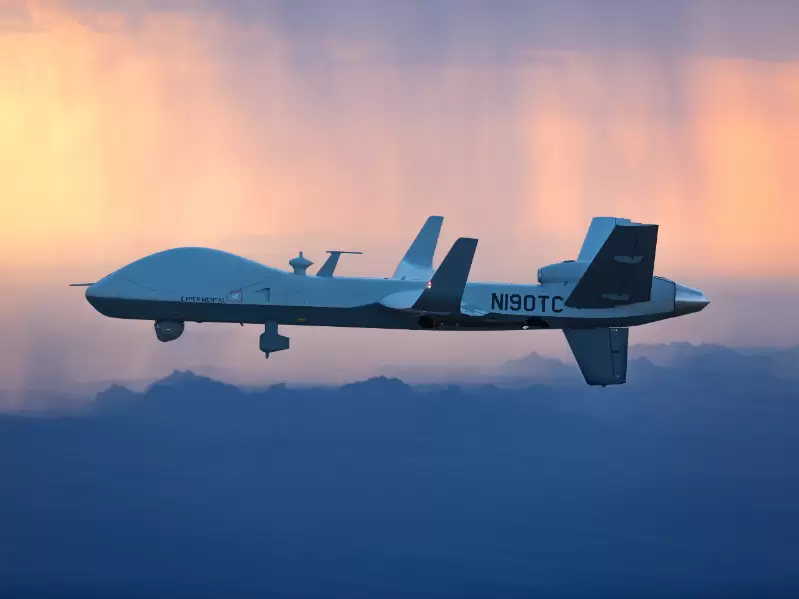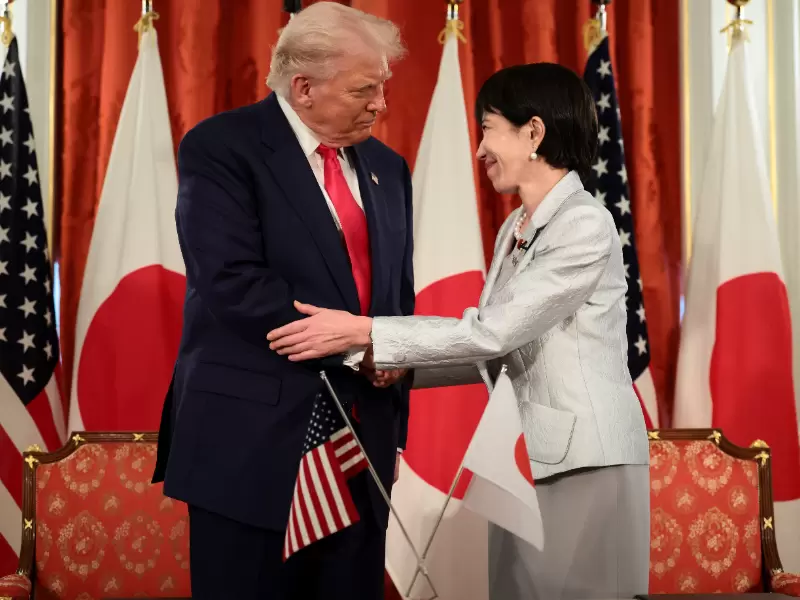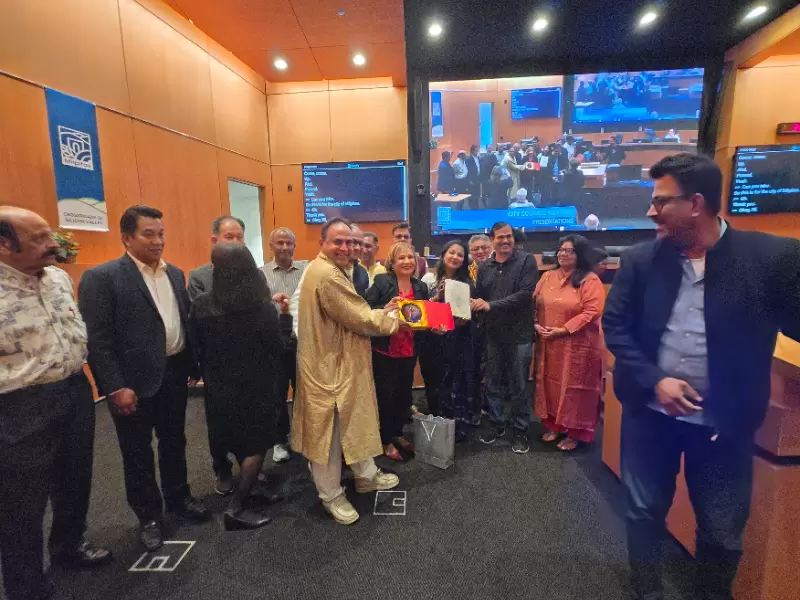Strengthening U.S.-India defense cooperation through the MQ-9B SkyGuardian®
MQ-9B SkyGuardian represents the next generation of medium-altitude, long-endurance (MALE) unmanned aerial systems (UAS)
 General Atomics Aeronautical Systems, Inc.’s (GA-ASI) MQ-9B SkyGuardian comes from a family of systems with more than 9 million flight hours, showcasing decades of operational experience. / General Atomics
General Atomics Aeronautical Systems, Inc.’s (GA-ASI) MQ-9B SkyGuardian comes from a family of systems with more than 9 million flight hours, showcasing decades of operational experience. / General Atomics
The U.S.-India defense partnership has undergone a remarkable transformation over the past two decades and there’s no reason for it to slow down now.
At the forefront of this growing partnership is the emphasis on maritime security in the Indo-Pacific—a region central to global stability and economic prosperity. As the U.S. and India deepen their defense ties, advanced unmanned systems like General Atomics’ MQ-9B SkyGuardian® offer a unique opportunity to amplify joint capabilities, enhance situational awareness, and address shared challenges bilaterally but also in concert with other nations in the neighbourhood.
Maritime Security: A Strategic Imperative
The Indo-Pacific is home to critical sea lanes that support global trade, but it is also rife with challenges ranging from piracy to territorial disputes and the growing presence of potential peer-state adversaries. For India, ensuring maritime security is not just about safeguarding its own waters but also about fulfilling its role as a security provider in the region.
For the U.S., stability and peace around the Indo-Pacific are just as critical in view of its outside economic and geopolitical importance.
This shared vision has led to closer cooperation between the two nations, including joint naval exercises like Malabar, technology transfers, and agreements such as the Communications Compatibility and Security Agreement (COMCASA). As the partnership grows, integrating cutting-edge unmanned systems into their joint operations offers a way to address the region’s complex security dynamics with greater precision and efficiency.
MQ-9B: A Game-Changer for the Indo-Pacific
General Atomics Aeronautical Systems, Inc. (GA-ASI) has been a global leader in unmanned systems for over three decades, and its MQ-9B SkyGuardian represents the next generation of medium-altitude, long-endurance (MALE) unmanned aerial systems (UAS). The MQ-9B is uniquely suited to address the maritime security challenges facing the U.S. and India, offering capabilities that stand out in terms of endurance, versatility, and cost-effectiveness.
One of the key advantages of the MQ-9B is its ability to provide persistent surveillance over vast maritime areas. With an endurance of over 40 hours, in some configurations, and advanced sensors capable of 360-degree search and sensing, the MQ-9B can monitor critical sea lanes, detect potential threats, and provide actionable intelligence to commanders. This capability is invaluable in the Indo-Pacific, where the sheer scale of the region makes traditional surveillance methods both costly and resource-intensive.
Additionally, the MQ-9B’s adaptability allows it to address a wide range of threats, from stealthy cruise missiles to low-cost drones and loitering munitions. This versatility is critical in a region where adversaries are increasingly employing asymmetric tactics to disrupt traditional defenses. By integrating the MQ-9B into joint operations, the U.S. and India can enhance their ability to detect, deter, and respond to threats across the full spectrum of conflict.
Advancing Technology Sharing and Joint Development
Beyond its operational capabilities, the MQ-9B offers a platform for deeper collaboration in defense technology and innovation. As India continues to pursue its goal of becoming a global hub for defense manufacturing under the “Make in India” initiative, partnerships with U.S. companies like General Atomics can play a pivotal role in transferring technology, building local capacity, and fostering joint development.
The MQ-9B program is already a testament to the potential of such collaboration. India’s acquisition of the MQ-9B will not only enhance its surveillance and reconnaissance capabilities but also open avenues for co-development in areas like data analytics, artificial intelligence (AI), and autonomous systems. These efforts can help India build indigenous capabilities while strengthening the interoperability of U.S. and Indian forces.
Moreover, the MQ-9B’s modular design allows for customization based on operational needs, making it an ideal candidate for joint experimentation and innovation. By developing new payloads, sensors, and software, the U.S. and India can ensure that the MQ-9B remains at the cutting edge of unmanned systems technology while addressing their specific strategic priorities.
A Vision for the Future
As the U.S.-India defense partnership continues to evolve, the integration of UAS like the MQ-9B into joint operations represents a natural next step. These systems not only enhance situational awareness and operational effectiveness but also serve as a catalyst for deeper collaboration in defense technology and innovation.
Looking ahead, the U.S. and India have an opportunity to build on their shared interests in the Indo-Pacific by expanding cooperation in areas like autonomous systems, AI, and space-based surveillance. By leveraging platforms like the MQ-9B, they can develop joint capabilities that address emerging threats while promoting stability and security in the region.
The MQ-9B SkyGuardian is more than just a technological marvel—it is a symbol of what is possible when two democracies with shared values and strategic interests come together to address common challenges. As the U.S.-India defense partnership enters a new phase, the MQ-9B offers a tangible way to strengthen ties, enhance capabilities, and secure the Indo-Pacific for generations to come.
The future of unmanned systems is not just about technical improvements but about using them most effectively to achieve big effects. For the U.S. and India, the MQ-9B represents an opportunity to do just that—combining cutting-edge technology with a shared vision for peace and prosperity in one of the world’s most vital regions.
By embracing this partnership and the possibilities it offers, the U.S. and India can ensure that their defense relationship continues to grow in both scale and significance, paving the way for a safer, more secure Indo-Pacific.
The author is chief executive of General Atomics Global Corporation.
(The views and opinions expressed in this article are those of the author and do not necessarily reflect the official policy or position of New India Abroad)
ADVERTISEMENT
ADVERTISEMENT
E Paper
Video


 Dr. Vivek Lall
Dr. Vivek Lall














Comments
Start the conversation
Become a member of New India Abroad to start commenting.
Sign Up Now
Already have an account? Login